The recruitment funnel can be a new concept for professionals reading this article. We would like to help you get a deep understanding of what the HR recruitment funnel is, how important it is and how to create a great recruitment funnel. We also share some special metrics to measure the effectiveness of each stage in the recruiting process.
There is a variety of tasks in the HR department among which recruiting and hiring talent might be the most important one in this day and age. It is crucial that the hiring processes are optimized to help a company select the most fitting candidate for the job in the most efficient and effective way.
Lately, an HR term called recruitment funnel has garnered a great deal of attention because of its huge impact on the hiring processes. Have you ever heard of the recruitment funnel?
What is a recruitment funnel?
How do you keep track of your candidate pipeline? Do you have a clear overview of your process and key metrics? A recruitment funnel is a framework for HR professionals that encompasses the entire recruitment process, refining a long list of candidates to result in the best ones to recruit.
| >>> You might also wonder about: Cognitive Biases in Recruitment Process, How to avoid it?
Each company shall have their own recruiting funnel which may vary based on the specific needs of each organization.
Why is the recruitment process referred to as a funnel?
A funnel starts with a big mouth at the beginning and narrows down at the bottom, enabling a small amount of substance going into the container. The recruitment process similarly starts with a pool of potential job applicants, it then does the sorting job to filter out unmatched candidates, leaving only the most qualified candidates to be chosen to work for the organization.
Here is how a recruitment funnel can be illustrated
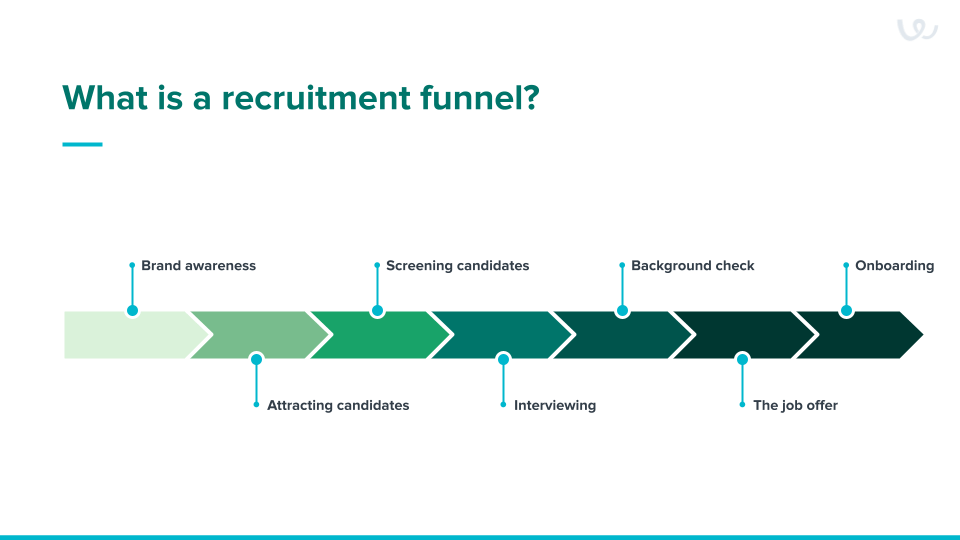
Basically, there are 7 steps in the recruiting funnel which are Awareness, Attraction, Interest, Application, Interview, Hire and Advocacy. These 7 steps are in a subsequent order, from getting engagement with the candidates to establishing relationships and networks, identifying talents, hiring talents, and turning talented employees into organizations’ advocates to promote the brand.
Splitting the hiring process into a list of small manageable steps can assist HR staff to create smaller goals and tasks. For each defined step, metrics can be applied to measure what works and what does not, therefore, HR experts can keep monitoring and enhancing the hiring process.
| >>> You might interested in: The Employee Life Cycle Model: what is it and why it is important?
Goals:
The basic goal of the recruiting funnel is to create a repeatable, measurable and systematic process for attracting, nourishing, and hiring talent by simplifying the recruitment process into various phases with specific tasks.
It is interesting that recruitment shares common goals with marketing in the sense that a marketing funnel can assist organizations drive audience into buyers, while the recruiting funnel supports organizations in driving potential candidates into highly skilled workers.
Now let traicie walk you through the recruiting funnel to see how each step is an indispensable part of the whole HR hiring process and then we shall assist you develop strategies to establish your own funnel.
| Awareness: At the top of the recruitment funnel, brand awareness suggests that organizations really desire to be on candidates’ radar. At this stage, organizations just expect their candidate to remember their brand names, recognize their logos and the company website. |
Although 90% of businesses are SMEs, they create more than 50% of jobs worldwide. Job applicants are likely to know very little about the SME vacancies they apply for. To become the employer of choice, the organization should make the first move to get people to know about them. This is done through employer marketing. |
| Attraction This surely is the first narrowing in the recruitment funnel, but companies may like to keep it as wide as possible. At this step, candidates have already memorized your company, now something appeals to them For example, they may say please tell me more about your culture or I am interested in your products. Candidates often wonder what it feels like to be an employee there or what career paths are. |
How can companies attract candidates? There are a number of strategies to attract new talents that companies may refer to. First, companies should prepare compelling job descriptions to highlight how a new hire will grow, learn, and create a difference for them. It is important to get job seekers excited about how they can develop themselves within your organization and become the professional they want to be. Do not forget to emphasize that your organization is invested in learning and development, setting a promising career path for candidates. Moreover, some companies apply referral bonuses for current employees to receive some incentives if they can successfully introduce a candidate into a new hire, bringing candidates into the funnel. |
| Interest The candidates actively researches the company and is on the lookout for a suitable position. Not only will the candidate reflect on the job requirements but also see if there is a match in culture and purpose. |
At this point, candidates already know, like and trust the company thanks to brand marketing. The applicants shall go check out information about the companies, browsing the company website, LinkedIn, social media accounts like Facebook, Instagram, wondering whether there are some vacant job opportunities. |
| Application After getting to know about the company and the job opportunities being offered, a candidate loves to get a job there and clicks the ‘Apply’ button to send out the resume. Ideally, the candidate automatically becomes a part of the organization’s Applicant Tracking System (ATS). That is a huge win in the recruitment funnel. Although the recruitment funnel is greatly narrowed down in this stage, an important trend that is emerging is called ‘multi-matching’. Matching a candidate with more than just the role he/she applied for. Through multi-matching scares candidates that are rejected for one vacancy are re-introduced in the recruitment process and linked to another vacancy. See how the traicie technology enables multi-matching and maximizes the value of every applying candidate. Request a demo BELOW the table. |
At this step, the candidate will be prescreened either through a manual check through an automatic Artificial intelligence (AI) programming system. It is called resume screening. The choice for an automatic prescreening system like traicie can be based on a search for efficiency, objectivity or augmented information. The traicie algorithm offers automatic screening on attitude which is an important add-on to the human recruiter. Manual screening requires HR professional to carefully review details to filter only the best-matched candidates, while the other resume screening type is powered by artificial intelligence (AI) which scans the resume document for keywords and latent language patterns and show the results as an easy-to-interpret applicant profile. |
| Interview The top candidates that have passed the CV screening shall be invited to have interviews with HR experts and/or the manager of the department that they apply to work for. The candidates shall be asked questions, and exposed to the core elements of company culture to see if the candidates may be eligible to work there. This is when it is so important to bring about great candidate experience because if HR people got things wrong in this phase, all the steps leading up to this point will be wasted away. |
HR professionals should know how to get candidates excited throughout the candidate journey. It all starts early on whether candidates want to work for you, or you want them to work for you. Candidate experience needs to be pleasant. If a candidate does not have a good experience during the interview, for example, feeling disrespected or getting racial discrimination, it would ruin both the company brand and the consumer brand. Job interviews usually include 1 or 2 rounds with the purpose of narrowing down to 1 or 2 candidates. Companies should never organise too many job interviews because modern applicants don’t have enough patience to go through all of them. At the end of the interview, the manager is likely to know which candidate is 1st choice and who is the 2nd or occasionally 3rd best option after doing all questions and answers, thus the funnel is tightly narrowed down to only 1 or 2 candidates. |
| Hire After doing interviews, the company will select the best candidate for the vacant position and send the job offer to the individual. At this step, the candidate can consider whether to accept, negotiate further with regard to some terms or reject this opportunity right away. This step reflects whether all the efforts the company has spent from the beginning of the recruitment funnel are well invested. |
If the two parties, candidates and HR may not agree on some terms stated in the job offer and finally not be able to negotiate further, thus the candidate turns down the offer, HR professionals may have to go back to the interviewing step of the funnel in the hope that the 2nd / 3rd best applicant is still available to accept the offer. In case the candidate accepts the offer, the recruiting funnel shall not end there, but continues one more phase. |
| Advocacy This is where the recruitment funnel ends and the companies hope to convert employees into their advocates. |
Advocates are the ones who really love the company, speaking out about the greatness of their working journey and becoming a free marketing agent for the company to attract other candidates to apply. This is reducing the company’s marketing costs and is a real final win for the company. |
Why is a hiring funnel important?
The hiring funnel gives companies a big hand when splitting long and somehow tedious HR hiring process into smaller steps from refining a long list of candidates to identify the best ones to recruit. It is essential due to the following reasons:
- Simplify the long recruiting process into small stages, each with its own strategies, goals, and actions
- Break each of those stages into functional tasks that can easily be assigned to an HR employee
- Make the most out of each phase of the funnel, making sure that candidates keep their interest in the company and start engaging
- Optimize resource usage at each stage of the funnel to gain maximum benefits
- Notice to enhance or remove any procedures that are no longer effective at any stage of the funnel
How to create and optimize a hiring funnel?
After getting all the definitions of a hiring funnel and list of reasons to establish one for a company, let’s start creating an efficient recruitment funnel.
Fully understanding the recruitment funnel!
To create something, you need to have a deep understanding to work your way up to the creating part. Because the recruitment process involves not only the HR department but also others such as the brand marketing team, as an HR expert, you’ll be communicating to people outside HR and you need to explain the funnel concept to them, thus it is important you gain a deep knowledge about the funnel first.
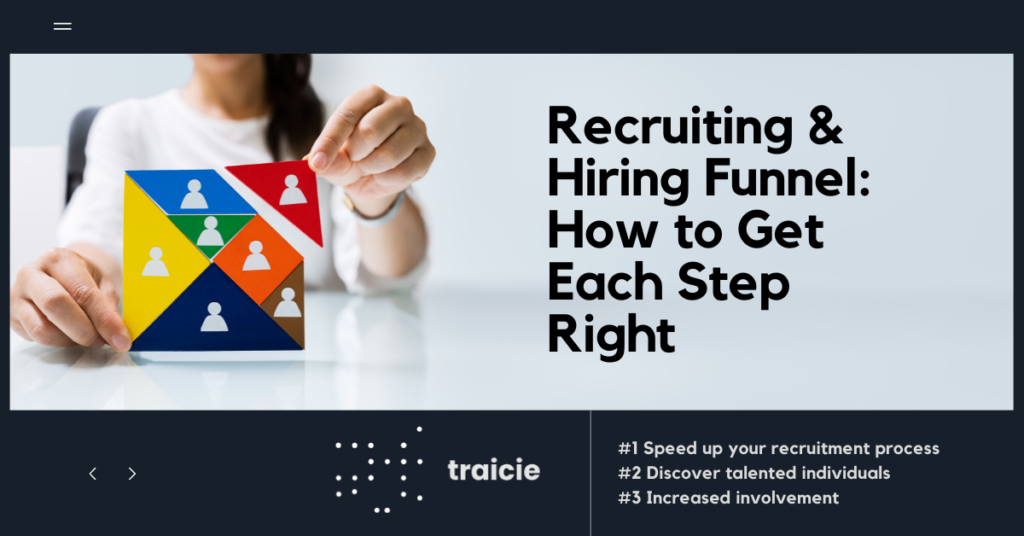
Create metrics to measure the effectiveness of each step
Setting up targets in the form of metrics for your recruitment funnel is a good idea to keep track of how it is doing. With metrics, HR professionals can easily create and test a recruitment funnel and its efficiency.
What are good funnel metrics to measure recruitment effectiveness?
- Quality of hire
- Source of hire
- Time to hire
- Cost per hire
- Recruitment effectiveness
Those metrics will be explained in the next section. Making sure that all relevant departments support the recruitment funnel, metrics and goals.
Your funnel can be great, however, creating an efficient funnel, it demands great collaboration with other stakeholders. For instance, if the accounting department head needs more than three rounds of interviews to select the best candidate, the next stage in the tunnel may not retain any candidates due to a lack of patience, thus wasting all the efforts of making previous steps in the funnel happen.
After all, the preparation, let’s get practical by applying the funnel that you have carefully designed. Remember to monitor each step closely to make sure you are running the funnel smoothly with the help of the finest HR tools and thus increase work productivity.
Find out what hiring metrics are positively affected by traicie the best sourcing tool for recruiters to improve your hiring process.
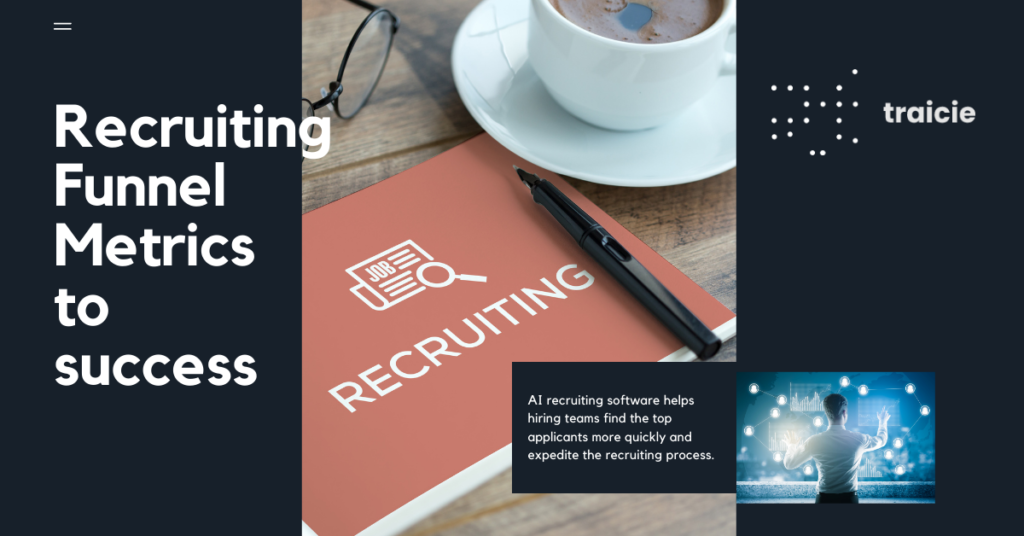
Metrics to monitor at each stage of a recruitment funnel
Quality of hire
The quality of hire needs to be measured and it shall be one of the most useful recruitment metrics for hiring managers in the sense that more high-quality hires are meant to find a better match for a company. Quality of hire leaves a long-term impact on the company. It also affects employees’ overall quality, productivity, engagement, and satisfaction.
New hire performance metrics are used by 51% of companies.
Turnover and retention metrics are used by 48% of companies.
Hiring manager satisfaction ratings are used by 41% of companies.
This metric intends to enhance the quality of a hire, leading to lower retention rates.
How to measure the quality of hire?
There is not a single formula to calculate quality of hire given that the selected candidates work for different departments and each department has its own tasks and goals. Quality of hire, hence, should be defined by the factors that drive top performance for a particular role. Gather data through performance reviews, peer reviews, hiring manager surveys, and retention tracking, or the time it takes for a new hire to get promoted to the higher position.
Source of hire
There are various ways companies can use to get closer to candidates. Recruiters can reach out to candidates through LinkedIn or social media such as Facebook, Instagram. Social media recruitment can be a good way to create connections with job applicants and passive talent. Besides this, advertisements on job portals are another effective way to declare to the world about the vacant positions and receive a great deal of job applications from active job seekers.
The recruitment metric that analyzes the source of hire is significant because it realistically portrays the outcome of the available channels currently used to reach out to candidates. HR professionals can compare the pros and cons of those channels and then decide which work best for them to find qualified candidates.
How to know via which hiring source the candidates get into the recruitment funnel?
Companies can do several tricks to track Source of hire:
Candidate surveys: Ask the candidate where they saw your job posting. This can be asked either within the application questionnaire or via a survey at the end of the recruitment funnel.
Tracked links: A common technique in digital marketing, using tracked links enables you to analyze where a candidate clicked through to your job application.
Time to hire
Keeping time record needed to place a new hire into a vacant position is a great recruitment metric that brings in stability for an organization. It shows the amount of time it would take to find, recruit, and hire a new employee for a role.
The most prosperous companies take necessary actions to reduce their time per hire while preserving the excellent quality of hire.
How to measure time to hire?
It can be measured by counting by deducting the date when the candidate accepts the job by the date the day the job requisition is opened.
Cost per hire
The cost per hire metric shows how much it costs companies to hire new talents. It may sum up all advertisement costs, recruiter fees, social media accounts, LinkedIn, etc. It covers individual hires and the cumulative number of new employees.
Same as the time to hire, cost per hire provides a recruitment metric and offers a complete insight into the recruitment process’s efficiency.
Hiring teams should store all the gathered information in one place and make them easily accessible to everyone included in the hiring process.
How to measure cost per hire?
(total internal recruiting costs + external recruiting costs) / (total # of hires in a given time frame)
Recruitment funnel effectiveness KPIs/ Metrics
It is crucial that recruiters and HR staff analyze the efficiency of the hiring process. New technology and digital tools in the HR sector are here to play their parts, which helps to conduct more candidate assessment methods. Yield ratios represent what percentage of candidates pass from one stage of the hiring process to another and is a great metric showing how effective the recruitment funnel is.
How to measure Yield ratios?
They are used to measure the success of various recruiting methods and strategies. For example, if 50 applicants apply for a position and 10 are phone screened, the yield ratio would be 20% ((10/50) * 100).
Source: Yield Ratios – SHRM
You can just measure the recruiting yield ratio per step to show the movement of candidates through each step of the hiring funnel. It can be achieved by dividing the total number of applicants who passes each stage over the total number of applicants.
If you notice a sudden decrease in a particular stage, it shall be high time refining your recruitment strategies in that stage. By knowing this metric, you get to know where the refinement is needed for better recruitment.
Other metrics can be included such as Offer Acceptance Rate, Average Number of Applicants, Application To Interview, Hiring Diversity, Candidate satisfaction
How do you create recruitment funnel in Excel?
Excel is a powerful tool that’s easy to use when it comes to create a recruitment funnel.
First, using a funnel chart function in Excel to represent values across multiple stages in the hiring process.
For example, you could use a funnel chart to show the number of sales prospects at each stage in a sales pipeline. Typically, the values decrease gradually, allowing the bars to resemble a funnel.
Set up your data like the above example. Use one column for the stages in the process, and one for the values.
Select the data.
Click Insert > Insert Waterfall, Funnel, Stock, Surface or Radar chart > Funnel.
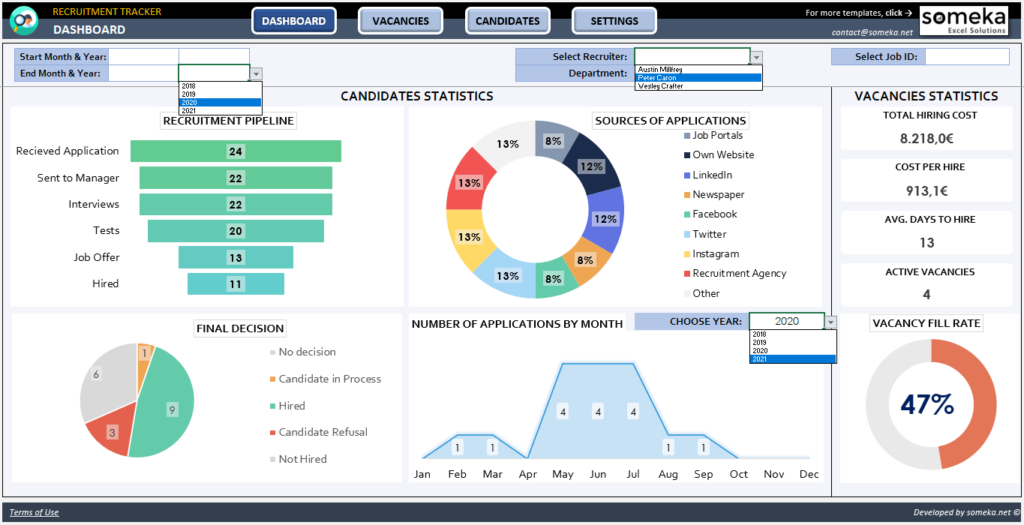
Tip: In Excel, use the Design and Format tabs to customize the look of your chart. If you don’t see these tabs, click anywhere in the funnel chart, and then the Chart Tools will appear at the top of the program:
It is not too difficult to use some simple Excel functions and designs to proceed recruitment calculation.
It would be great if you input these following information to make some calculations for your recruitment funnel
Offer status.
Department.
Type of available positions.
Offices.
Opening dates of available positions.
Interview date.
Check this out: https://www.exceldemy.com/create-a-recruitment-tracker-in-excel/
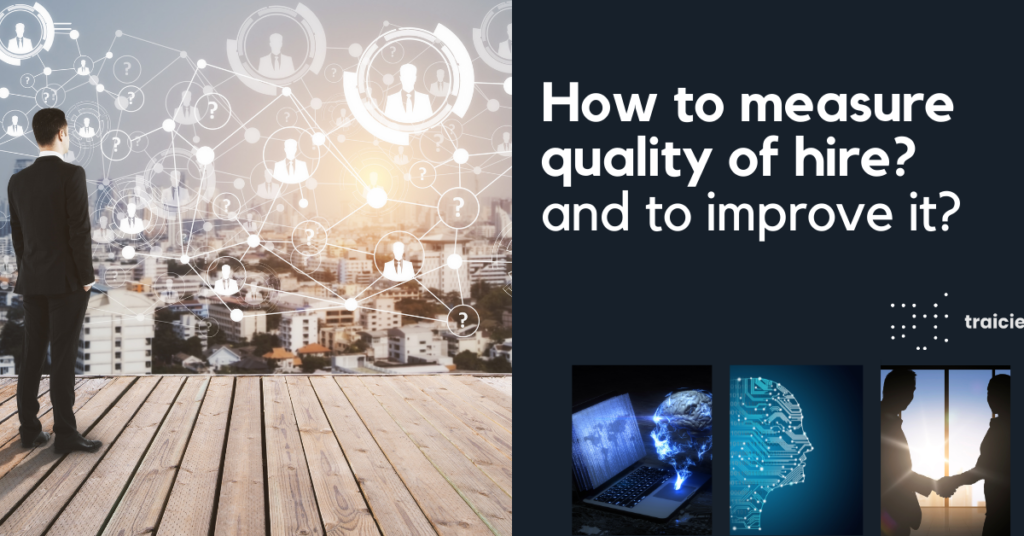
Recruiting funnel template for your companies.
To build a recruitment funnel template across your organization is crucial for two reasons:
HR analytics and reporting mean that it is crucial to be able to well explain the process to senior stakeholders with all visuals
It ensures that the entire organization follows a standardized and consistent process.
Each company shall have their own recruiting funnel which may vary based on the specific needs of each organization, hence, it is useful to apply a recruitment funnel template that is specifically customized to your business. Traicie would like to recommend several sites that offer sophisticated recruitment funnel templates:
SlideBazaar, for great animated templates, easily integrated into PowerPoint presentations for all audiences
Sketchbubble, for more technical templates aimed at an HR audience
Adnia solutions, for a simple and professional Excel spreadsheets, enabling us to track recruitment funnel metrics closely.
Exceldemy, for creating complete recruitment tracker in Excel
Note: These recommended sites are listed based on our recruitment expertise, we do not receive any incentives for mentioning their names here.
Do you know that traicie’s AI-empowered tool for HR Team in strategic operational value in recruiting process for term of:
- Cost of a job board- Reduce annual spending on job boards
- Cost of HR’S tools – Reduce the cost of surveys and assessment tools.
- Recruitment costs – Reduce selection costs
- Internal mobility – Fill more skilled jobs with internal staff
- Time to hire – Reduce the number of days a role goes unfilled.
- Salary costs – Reduce overall salary costs
- Attrition – Reduce the rate of turnover
- Recruitment cost – Reduce the general recruitment cost
One thought on “Recruitment funnel: what metrics to create to optimize?”